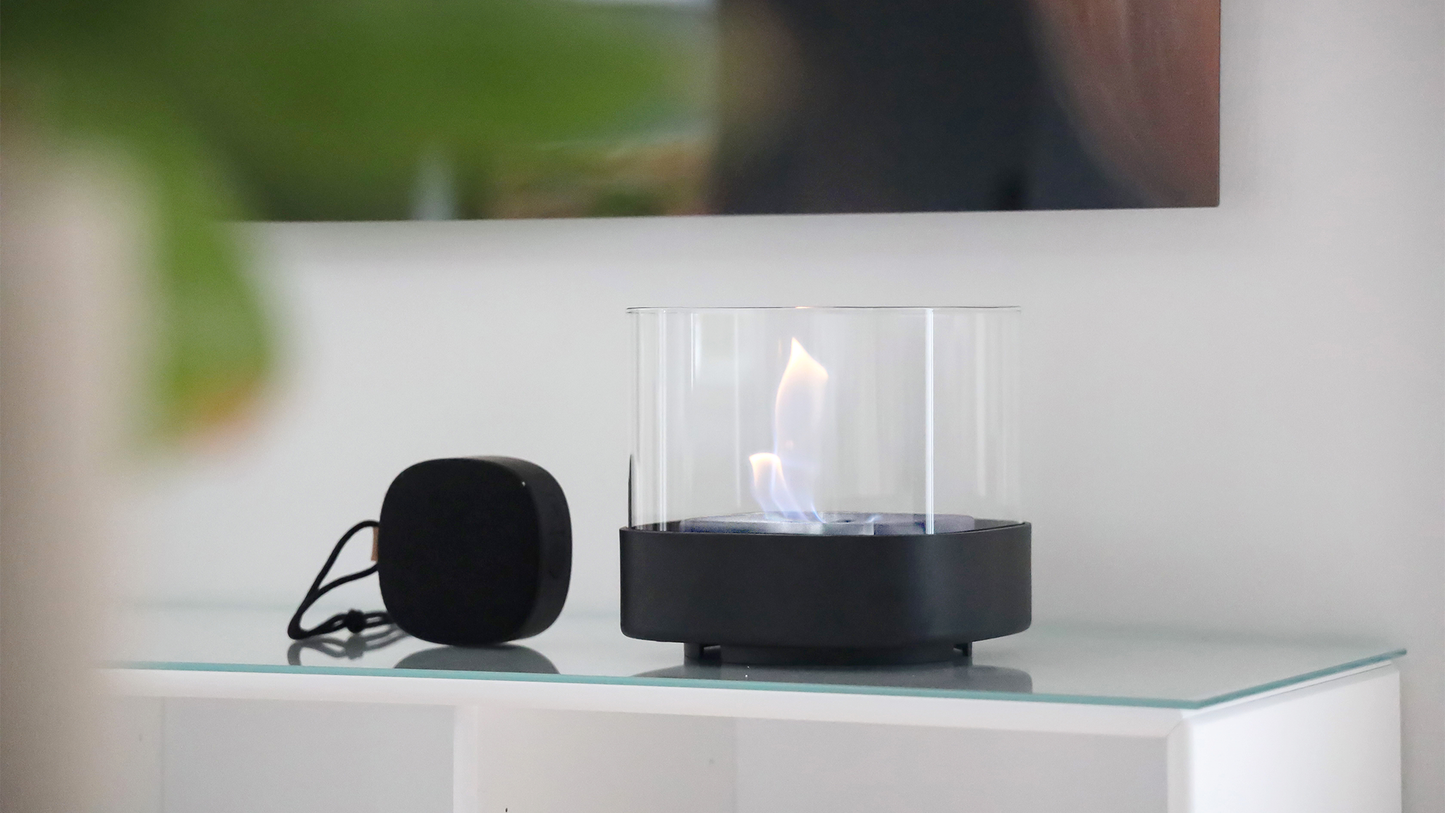Bioethanol fires do not produce a strong smell, making them an odorless and clean-burning option for homes. Bioethanol fuel is derived from plant materials and does not release any harmful or unpleasant odors when burned.
This makes bioethanol fires a popular choice for those who want to enjoy the ambiance of a real flame without the smell of traditional fuel sources. Furthermore, the lack of odor also means that bioethanol fires are suitable for indoor use, providing a cozy and eco-friendly heating option for any space.
The clean-burning properties of bioethanol make it a sustainable and odor-free choice for environmentally conscious homeowners.


Credit: www.facebook.com
What Is Bioethanol Fire?
Bioethanol fires are a modern and eco-friendly alternative to traditional wood-burning fireplaces. These fires utilize bioethanol fuel, a renewable and clean-burning source derived from plants.
Bioethanol Composition
Bioethanol is primarily composed of alcohol produced from fermented sugars found in various plant materials. This fuel source is flameless and odour-free, making it ideal for indoor use.
How Bioethanol Fires Work
Bioethanol fires consist of a burner unit where the bioethanol fuel is poured. When ignited, the flames burn cleanly, producing heat and ambiance without smoke or harmful emissions.

Credit: www.amazon.com
Does Bioethanol Fire Emit Smell?
Bioethanol fires are a popular choice for those seeking a clean and eco-friendly alternative to traditional wood-burning fireplaces. Many people wonder, ‘Does Bioethanol Fire Emit Smell?’
Factors Affecting Odor Emission
Bioethanol fires typically produce a faint odor due to the combustion process. Factors such as the quality of bioethanol fuel and the ventilation in the room can impact the intensity of the smell.
Odor Perception
The perception of odor from a bioethanol fire varies among individuals. Some may find the scent pleasant, resembling a subtle aroma similar to burning candles, while others may be more sensitive to the smell.
Managing Smell In Bioethanol Fires
Bioethanol fires are a popular choice for adding warmth and ambiance to a space without the need for a chimney or vent. However, some may wonder if these fires emit any odors. In this section, we will explore techniques to manage the smell that may arise from bioethanol fires.
Odor Neutralizing Techniques
When using bioethanol fires, employing odor neutralizing techniques can help mitigate any potential smell. Utilizing odor-neutralizing products designed specifically for bioethanol fires can effectively reduce any unwanted odors, keeping the space smelling fresh and pleasant.
Maintaining Proper Ventilation
Proper ventilation is crucial when it comes to managing the smell of bioethanol fires. Ensuring adequate airflow in the room where the fire is located can help prevent any lingering odors. This can be achieved through natural ventilation, such as opening windows or utilizing a venting system to facilitate the flow of fresh air in and out of the space.
Safety Concerns And Precautions
Bioethanol fires are known for their odorless and clean-burning nature, emitting no smell or fumes when in use. However, it is always essential to follow safety precautions such as proper ventilation and using high-quality bioethanol to ensure a safe and pleasant experience with minimal concerns.
Safety-concerns-and-precautions
When it comes to using bioethanol fires, ensuring safety and taking necessary precautions is of utmost importance. While these fires offer a convenient and eco-friendly alternative to traditional fireplaces, it is essential to understand the safety concerns and adopt safe usage practices.
Potential Health Risks
Bioethanol fires are generally considered safe for indoor use, but it’s crucial to be aware of potential health risks associated with their usage. The primary concern is carbon monoxide (CO) emission, which is a colorless and odorless gas that can be harmful if inhaled in high concentrations. Bioethanol fires produce a minimal amount of carbon monoxide compared to other fuel-burning appliances, but it’s important to provide adequate ventilation in the room where the fire is used.
Additionally, bioethanol fuel should never be ingested or used for any purpose other than intended. It is highly flammable and can cause serious injury if mishandled. Always keep the fuel away from open flames, heat sources, and children, and ensure it is stored in a safe and secure place.
Safe Usage Practices
To ensure the safe use of bioethanol fires, it is essential to follow these practices:
- Ensure proper ventilation: Provide adequate airflow in the room where the fire is used to prevent the buildup of carbon monoxide. Open windows or doors and avoid using the fire in enclosed spaces for an extended period.
- Only use recommended fuel: Use bioethanol fuel that is specifically designed for bioethanol fires. This ensures optimal performance and reduces the risk of accidents.
- Keep flammable objects away: Maintain a safe distance between the fire and any flammable objects, such as furniture, curtains, or paper. This reduces the risk of accidental fires or damage due to heat.
- Supervise the fire: Never leave the fire unattended and always extinguish it before leaving the room or going to sleep. This prevents potential accidents and ensures the fire is under control at all times.
- Use appropriate accessories: When handling the fire, use heat-resistant gloves or tongs to avoid burns. Also, have a fire extinguisher or fire blanket nearby in case of emergencies.
By following these safe usage practices and being mindful of the potential health risks, you can enjoy the warmth and ambiance of a bioethanol fire without compromising safety.
Conclusion And Recommendations
Bioethanol fires emit a subtle, pleasant aroma during use. Recommendations include choosing high-quality bioethanol fuel for optimal performance and minimal smell. Regular maintenance and proper ventilation can further enhance the experience of using bioethanol fires.
After examining whether bioethanol fires emit any noticeable smell, it can be concluded that the odor produced by these fires is minimal and subtle. However, there are certain factors that can influence the level of odor, such as the quality of bioethanol fuel used, the ventilation in the room, and the maintenance of the fire.
Choosing The Right Bioethanol Fire
When selecting a bioethanol fire, it is crucial to consider the quality of the product. Opt for a reputable brand that uses high-quality materials and adheres to safety standards. This ensures efficient combustion and reduces the likelihood of any unpleasant smells.
Additionally, it is advisable to research customer reviews and testimonials to gain insight into the performance and odor management of specific bioethanol fire models. This way, you can make an informed decision and choose a fire that suits your needs and preferences.
Best Practices For Odor Management
Although bioethanol fires generally emit minimal odor, there are some best practices you can follow to ensure the most pleasant experience:
- Ensure proper ventilation in the room where the bioethanol fire is installed. Good airflow helps to dissipate any odors that may be present.
- Regularly clean and maintain the bioethanol fire. This includes cleaning the burner, checking for any clogs or blockages, and ensuring proper alignment of components.
- Use high-quality bioethanol fuel that is specifically designed for use in bioethanol fires. Lower-quality fuels may produce a stronger smell.
- Follow the manufacturer’s instructions for operating the bioethanol fire. This includes adjusting the flame height and using the recommended amount of fuel.
- If you notice any excessive smell or strong odors, contact the manufacturer or a qualified professional for assistance. They can provide guidance on troubleshooting and resolving any potential issues.
By following these recommendations, you can enjoy the warmth and ambiance of a bioethanol fire without any significant odor concerns. Remember to prioritize safety and maintenance to ensure optimal performance and a pleasant experience.

Credit: sackit.eu
Frequently Asked Questions For Do Bioethanol Fires Smell
Do Bioethanol Fires Produce Any Odor?
Bioethanol fires are virtually odorless when they burn, making them an excellent choice for odor-sensitive individuals.
Is There Any Smell When Using Bioethanol As A Fuel?
No, bioethanol burns cleanly and does not produce any noticeable smell or fumes, enhancing your overall comfort.
Will A Bioethanol Fire Leave A Lingering Smell In My Home?
Unlike traditional wood-burning fires, bioethanol fires leave no lingering smell, allowing you to enjoy a comfortable and odor-free living space.
Are There Any Chemicals In Bioethanol Fires That May Generate An Odor?
Bioethanol is a renewable and eco-friendly fuel that burns cleanly, without emitting any harmful chemicals or unpleasant smells.
Can Bioethanol Fires Cause Any Irritating Or Strong Scents?
Not at all! Bioethanol fires emit no irritating scents, providing a pleasant and odorless ambiance that adds warmth and beauty to your home.
Conclusion
Bioethanol fires generally produce minimal to no smell. This eco-friendly and clean-burning fuel choice offers a pleasant and odorless atmosphere for your home. By understanding how bioethanol fires function, you can confidently enjoy a scent-free experience while enjoying the warmth and ambiance they provide.
